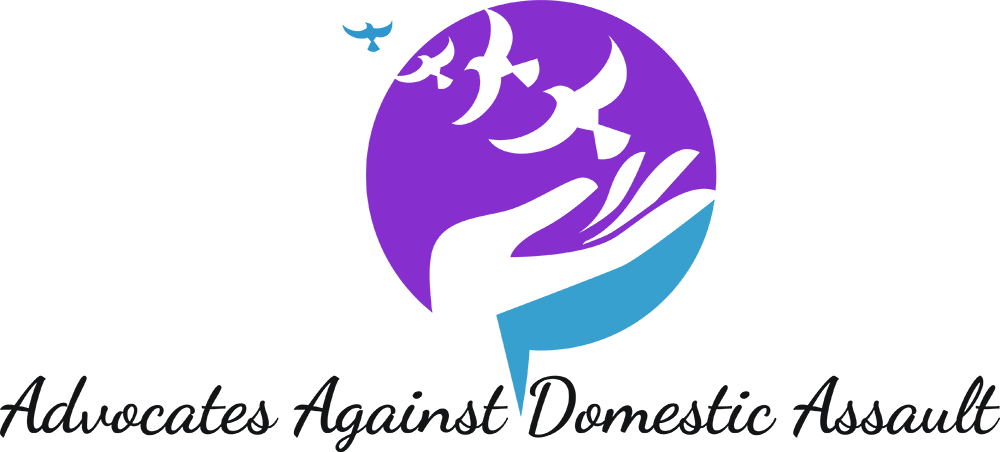Safety Planning
Empower Yourself
AADA Creates Your Personalized Safety Plan

Feeling unsafe at home can be paralyzing. But you don’t have to face this alone. Advocates Against Domestic Abuse can help you create a personalized safety plan. Through confidential conversations, our trained advocates will work with you to identify potential risks, establish escape routes, and develop communication strategies with loved ones. They can also provide information on legal options and emergency resources. AADA’s safety planning empowers you to take control and build a path towards a safer future for yourself and your loved ones.
If you're in an abusive relationship, think about...
- Having important phone numbers nearby for you and your children. Numbers to have are the police, hotlines, friends and the local shelter.
- Friends or neighbors yoyu could tell about the abuse. Ask them to call the police if they hear angry or violent noises. If you have cildren, teach them how to dial 911. Make up a code word that you can use when you need help.
- How to get out of you home safely. Pratice ways to get out.
- Safer places in your home where there are exits and no weapons. If you feel abuse is going to happen try to get your abuser to one of these safer places.
- Any weapons in the house. Think about ways that you could get them out of the house.
- Even if you do not plan to leave, think about where you could go. Think of how you might leave. Try doing things that get you out of the house – taking out the trash, walking your pet or going to the store. Put together a bag of things you use every day (see checklist below). Hide it where it is easy for you to get.
- Going over your safety plan often.
If you consider leaving your abuse, think about...
- Four places you could go if you leave your home.
- People who might be able to help you if you left. Think about people who will keep a bag of items for you. Think about people who might lend you money. Make plans for your pets.
- Getting a cell phone under your name only.
- Opening a bank account or getting a credit card in your name.
- How you might leave. Try doing things that get you out of the house – taking out the trash, walking the family pet, or going to the store. Practice how you would leave.
- How you could take your children with you safely. There are times when taking your children with you may put all of your lives in danger. You need to protect yourself to be able to protect your children.
- Putting together a bag of items you use every day. Hide it where it is easy for you to get.
What to take if possible
- ZChildren (if it is safe)
- ZCash or prepaid credit cards that cannot be traced back to you
- ZCredit cards, ATM cards and PIN numbers
- ZFinancial records and bank account numbers
- ZPrepaid cell phone; or phone in your name only
- ZKeys to car, house, work
- ZCar registration/insurance
- ZMedications and prescriptions
- ZEyeglasses, contacts ,hearing aids, any other medical devices
- ZImportant papers for you and your children (birth cetificates, social security cards, school and medical records, etc.)
- ZDriver's license or photo ID
- ZGovernment benefits cards
- ZPassports, green cards, work permits
- ZLease/rental agreements; homeowner title or deed
- ZW2s and paystubs
- ZPPO, divorce papers, police reports, custody orders
- ZJournals, images, anything that documents the abuse
- ZPictures, jewelry, things that mean a lot to you
- ZItems for your children (toys ,blankets, etc.)
- ZIf you are leaving with a pet - food, leash, kennel, pet medical records, etc.
- ZPost office box or safe forwarding address
If you have left your abuse, think about...
- Your safety – you still need to.
- Getting a cell phone. Use it to call your attorney, advocate or law enforcement that are not safe to reveal to the abuser.
- Getting a Permanent Protect Order (PPO) from the court. Safe Shelter can help you with this. Keep a copy with you all the time. Give a copy to the police, people who take care of your children, their schools and your boss.
- Changing the locks. Consider putting in stronger doors, smoke and carbon monoxide detectors, a security system and outside lights.
- Telling friends and neighbors that your abuser no longer lives with you. Ask them to call the police if they see your abuser near your home or children.
- Telling people who take care of your children the names of people who are allowed to pick them up. If you have a PPO protecting your children, give their teachers and babysitters a copy of it.
- Telling someone at work about what has happened. Ask that person to screen your calls. If you have a PPO that includes where you work, consider giving your boss a copy of it and a picture of the abuser. Think about and practice a safety plan for your workplace. This should include going to and from work.
- Not using the same stores or businesses that you did when you were with your abuser.
- Someone that you can call if you feel down. Call that person if you are thinking about going to a support group or workshop.
- Safe way to speak with your abuser if you must.
- Going over your safety plan often.
Leaving an abusive relationship can be incredibly dangerous. Abusers often escalate their controlling behaviors when they feel like you’re slipping away. Your safety is paramount. Here’s what you can do:
- Plan your escape carefully. AADA can help you create a personalized safety plan: (719) 846-6665.
- Be extra cautious after leaving. Abusers might try to contact you or show up unexpectedly.
- Have a safety plan in place and trust your instincts. Call 911 if you feel threatened.
